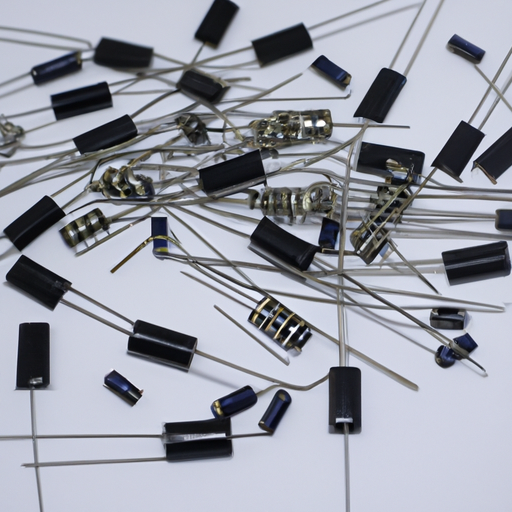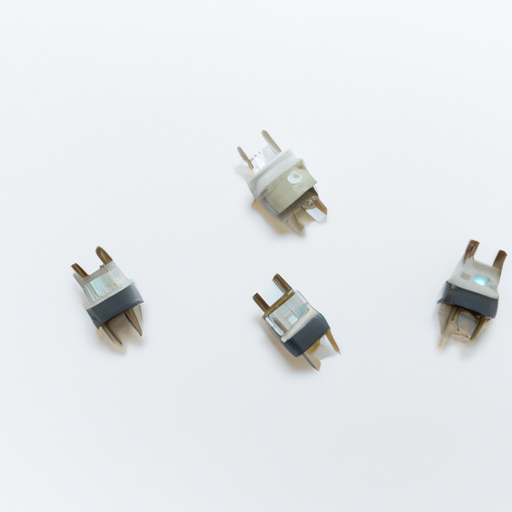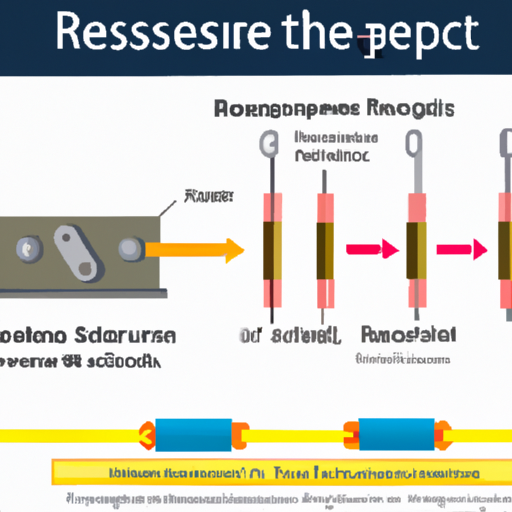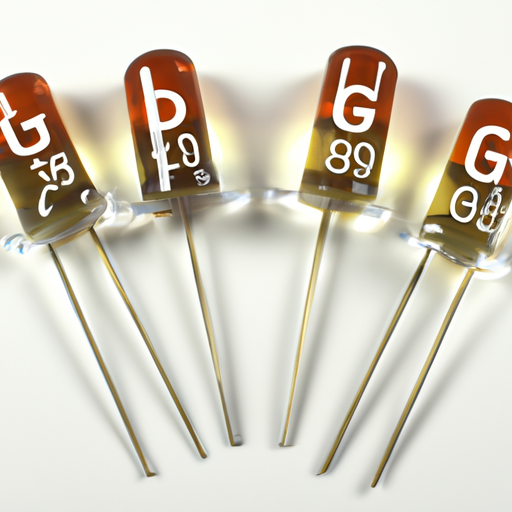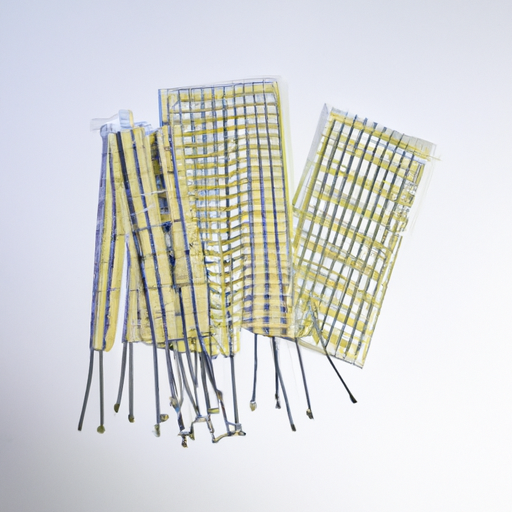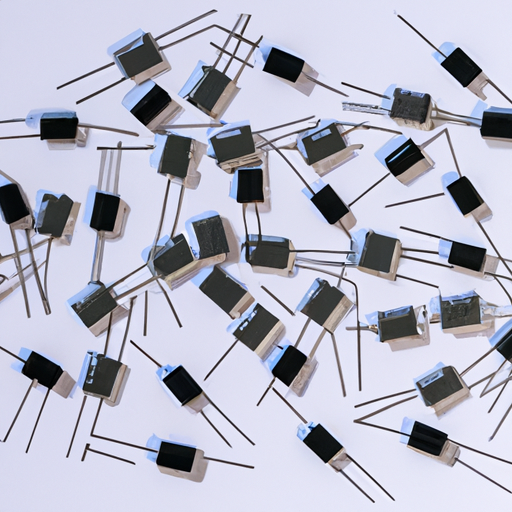What are the Mainstream Resistors?
I. Introduction
A. Definition of Resistors
Resistors are fundamental components in electrical and electronic circuits, designed to limit the flow of electric current. They are passive devices that convert electrical energy into heat, thereby controlling the voltage and current within a circuit. The resistance of a resistor is measured in ohms (Ω), and it plays a crucial role in determining how much current will flow for a given voltage.
B. Importance of Resistors in Electrical Circuits
Resistors are essential for various reasons. They help protect sensitive components from excessive current, divide voltages to create reference levels, and set biasing conditions in transistors. Without resistors, circuits would be prone to damage and malfunction, making them indispensable in both simple and complex electronic systems.
C. Overview of the Article
This article will explore the different types of mainstream resistors, their specifications, applications, and future trends in resistor technology. By understanding these aspects, readers will gain insight into the critical role resistors play in modern electronics.
II. Understanding Resistors
A. Basic Functionality of Resistors
1. Ohm's Law
Ohm's Law is a fundamental principle that describes the relationship between voltage (V), current (I), and resistance (R) in an electrical circuit. It states that V = I × R. This equation illustrates how resistors control the flow of current by providing a specific resistance to the circuit.
2. Role in Current Limiting and Voltage Division
Resistors are commonly used to limit current to protect components from damage. They also play a vital role in voltage division, where a series of resistors can create specific voltage levels needed for different parts of a circuit.
B. Types of Resistors
1. Fixed Resistors
Fixed resistors have a constant resistance value and are the most common type used in circuits. They are available in various materials and power ratings.
2. Variable Resistors
Variable resistors, such as potentiometers and rheostats, allow users to adjust the resistance value. They are often used in applications like volume controls and light dimmers.
3. Special Resistors
Special resistors include thermistors, photoresistors, and varistors, which change their resistance based on temperature, light, or voltage, respectively.
III. Mainstream Resistor Types
A. Carbon Composition Resistors
1. Construction and Materials
Carbon composition resistors are made from a mixture of carbon particles and a binding resin. The resistance is determined by the ratio of carbon to resin.
2. Advantages and Disadvantages
These resistors are inexpensive and can handle high energy pulses. However, they have a higher tolerance and lower stability compared to other types.
3. Common Applications
Carbon composition resistors are often used in applications where high energy pulses are present, such as in audio equipment and older electronic devices.
B. Carbon Film Resistors
1. Construction and Materials
Carbon film resistors are made by depositing a thin layer of carbon on a ceramic substrate. This construction allows for better precision and stability.
2. Advantages and Disadvantages
They offer lower noise and better temperature stability than carbon composition resistors. However, they can be more expensive and less durable under high power conditions.
3. Common Applications
Carbon film resistors are widely used in precision applications, such as in measurement devices and audio equipment.
C. Metal Film Resistors
1. Construction and Materials
Metal film resistors are made by depositing a thin layer of metal on a ceramic substrate. This construction provides excellent stability and low noise.
2. Advantages and Disadvantages
They have a low temperature coefficient and high precision, making them ideal for sensitive applications. However, they can be more expensive than carbon-based resistors.
3. Common Applications
Metal film resistors are commonly used in high-precision applications, such as in instrumentation and high-frequency circuits.
D. Wirewound Resistors
1. Construction and Materials
Wirewound resistors are made by winding a metal wire around a ceramic or fiberglass core. This construction allows for high power ratings.
2. Advantages and Disadvantages
They can handle high power and have low inductance, but they are bulkier and can be more expensive.
3. Common Applications
Wirewound resistors are often used in power applications, such as in power supplies and motor controls.
E. Thick Film Resistors
1. Construction and Materials
Thick film resistors are made by printing a thick layer of resistive material onto a substrate. This method allows for mass production and cost-effectiveness.
2. Advantages and Disadvantages
They are inexpensive and suitable for surface mount technology, but they may have higher noise levels and lower precision compared to thin film resistors.
3. Common Applications
Thick film resistors are widely used in consumer electronics and automotive applications.
F. Thin Film Resistors
1. Construction and Materials
Thin film resistors are made by depositing a very thin layer of resistive material onto a substrate. This construction provides high precision and stability.
2. Advantages and Disadvantages
They offer excellent performance in terms of temperature coefficient and noise, but they can be more expensive to produce.
3. Common Applications
Thin film resistors are used in high-precision applications, such as in medical devices and aerospace technology.
G. SMD Resistors (Surface Mount Device)
1. Construction and Materials
SMD resistors are designed for surface mounting on printed circuit boards (PCBs). They are typically made from thick or thin film materials.
2. Advantages and Disadvantages
They allow for compact designs and automated assembly, but they can be more challenging to handle and replace.
3. Common Applications
SMD resistors are widely used in modern electronics, including smartphones, computers, and other compact devices.
IV. Key Specifications of Resistors
A. Resistance Value
The resistance value is the primary specification of a resistor, indicating how much it resists the flow of current. It is measured in ohms and can vary widely depending on the type of resistor.
B. Tolerance
Tolerance indicates the accuracy of the resistor's resistance value, expressed as a percentage. A lower tolerance means a more precise resistor.
C. Power Rating
The power rating indicates the maximum power a resistor can dissipate without overheating. It is measured in watts and is crucial for ensuring the resistor operates safely within its limits.
D. Temperature Coefficient
The temperature coefficient indicates how much the resistance value changes with temperature. A lower temperature coefficient means better stability across temperature variations.
E. Voltage Rating
The voltage rating indicates the maximum voltage that can be applied across the resistor without causing damage. Exceeding this rating can lead to resistor failure.
V. Applications of Resistors
A. In Consumer Electronics
Resistors are ubiquitous in consumer electronics, used in devices like televisions, radios, and smartphones to control current and voltage levels.
B. In Industrial Equipment
In industrial applications, resistors are used in control systems, motor drives, and power supplies to ensure reliable operation.
C. In Automotive Applications
Resistors play a critical role in automotive electronics, including in sensors, control units, and lighting systems.
D. In Telecommunications
In telecommunications, resistors are used in signal processing, impedance matching, and circuit protection.
E. In Medical Devices
Medical devices rely on resistors for accurate measurements and control, ensuring patient safety and device reliability.
VI. Future Trends in Resistor Technology
A. Advancements in Materials
Research is ongoing into new materials that can enhance resistor performance, such as nanomaterials and advanced ceramics.
B. Miniaturization and Integration
As electronic devices become smaller, the demand for miniaturized resistors that can be integrated into compact designs is increasing.
C. Smart Resistors and IoT Applications
The rise of the Internet of Things (IoT) is driving the development of smart resistors that can provide real-time data and feedback for enhanced functionality.
VII. Conclusion
A. Summary of Key Points
Resistors are essential components in electrical circuits, with various types and specifications tailored for specific applications. Understanding the different types of resistors, their advantages, and their applications is crucial for anyone working in electronics.
B. The Importance of Choosing the Right Resistor
Selecting the appropriate resistor for a given application is vital for ensuring circuit performance and reliability. Factors such as resistance value, tolerance, and power rating must be considered.
C. Final Thoughts on the Role of Resistors in Modern Electronics
As technology continues to evolve, resistors will remain a cornerstone of electronic design, adapting to meet the demands of new applications and innovations. Their role in ensuring the functionality and safety of electronic devices cannot be overstated.
VIII. References
A. Academic Journals
- IEEE Transactions on Electron Devices
- Journal of Electronic Materials
B. Industry Publications
- Electronic Design Magazine
- EDN Network
C. Online Resources and Databases
- Digi-Key Electronics
- Mouser Electronics
This comprehensive overview of mainstream resistors highlights their significance in modern electronics, providing a foundation for further exploration and understanding of this essential component.

